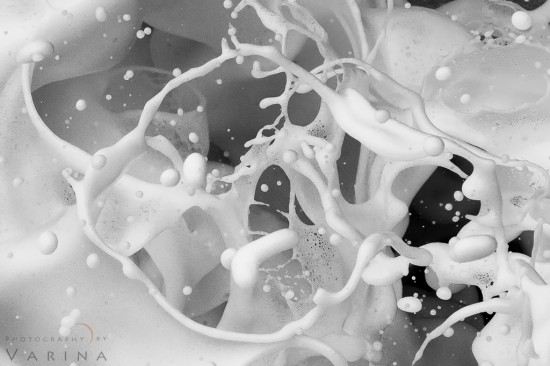I took this landscape photo during our workshop at Nine Mile Pond. My goal was to capture the beautiful light in the sky, and it’s reflection in the water. I wanted to simplify the image as much as possible, but ripples on the pond made the surface choppy, and made the scene seem too busy. The solution? A long shutter speed. I placed a Neutral Density Filter on my lens to reduce the amount of light reaching the sensor, and set my aperture to f/8. A shutter speed of 30 seconds removed any trace of the ripples on the water – leaving the surface smooth and soft.
So – just to stir things up a bit… what do you think? Is it ever OK to manipulate a landscape photo? In February, one of our students came to me with a question. “Isn’t processing a photo using Photoshop a ‘manipulation’?” he said. “Isn’t that tantamount to removing the integrity of a photograph?” Let’s put aside for a moment the general lack of knowledge that led to this question. To be fair – this student had very little background information to draw from, and didn’t know how a camera processes a JPG photo, or even the difference between a JPG and a RAW file. His question wasn’t meant to be offensive – though I’m sure many of you are cringing out there.
Still – it’s a loaded question if I ever heard one. It used to be that you weren’t considered to be a “real” photographer unless you developed your own film, and printed it in a darkroom. Sending it off to a lab was the sure sign of an amateur. (Now, there’s a whole different argument there, I know! And for the record – I don’t believe it’s true.) So, by that logic – does it make sense to say that one who processes their own photos using a digital darkroom – the RAW converter or Photoshop – is less of a photographer than one who allows the camera to choose the settings? Is a photographer who puts in the extra effort to finish an image doing something wrong?
All right – so, what does that have to do with this photograph? Well – the fact is, I manipulated this scene. But not in Photoshop. I manipulated it in the field. The scene didn’t look like this in reality. The colors are true to my recollection – but the surface of the water was certainly not smooth. I used a Neutral Density filter and a long shutter speed to completely alter the reality of the scene. So, is this any different than manipulating reality in the dark room, or in Photoshop? Is the photograph a lie? Or is it simply art? No more and no less.
Here are few other ways to manipulate the photo without using Photoshop:
For me, the answer is simple. My landscape photographs are just art. And that simplifies things even further. When you are making art – the artist gets to make the rules – and worrying about what others think is just a distraction. So I’ll continue to make art – with a little help from Nature. 🙂 But, what do you think? Is it “fair” to manipulate a landscape photo? Does it make a difference if the manipulation happens in-camera or in Photoshop? I’d like to hear what you have to say. Seasoned photographers and amateurs alike. What do you think?
Visual Wilderness https://ift.tt/2taNOSu
Sourced by Time Trap Photography sharing the best photography tips, news and tricks throughout the industry. Time Trap Photography is dedicated to freezing those special moments in life that can be revisited and admired for generations to come. - Shannon Bourque
Please visit our main site for booking availability and rates.

Receive valuable industry knowledge delivered free to your email each day.











No comments:
Post a Comment
Thank you so much for your comment. A moderator will review and approve all relevant posts. We appreciate your support and encourage you to stay with us by subscribing to our email updates. Where you can easily pick and choose what photography subjects interests you. Subscription link: http://bit.ly/photo-sub